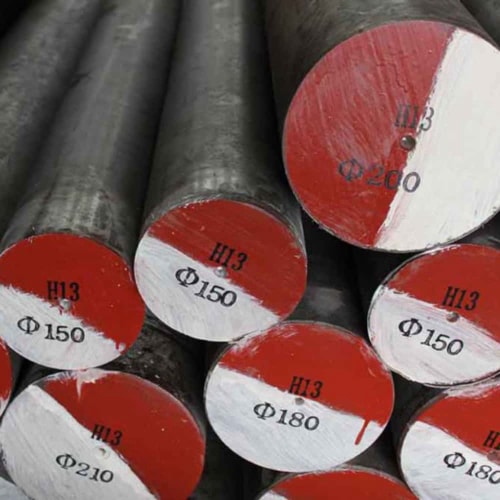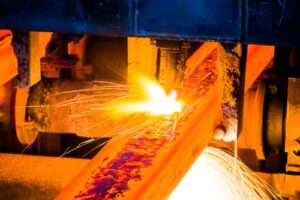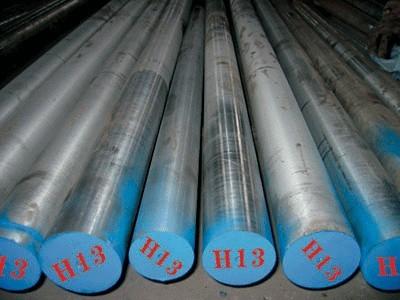Welcome to My Blog! 🌟
Before we dive into the content, I’d love for you to join me on my social media platforms. It’s where I share more insights, engage with our vibrant community, and post regular updates. Here’s how you can stay connected:
📘 Facebook: Connect with me on Facebook
Now, let’s embark on this journey together. I hope you find the content here insightful, engaging, and most importantly, valuable. Let’s explore, learn, and grow together! 🚀
Table of Contents
Introduction

When considering industrial-grade steel options, h13 steel for sale is among the most sought-after materials due to its exceptional thermal fatigue resistance, high toughness, and versatility in hot and cold working applications. However, buyers often make critical mistakes during the purchasing process that lead to wasted money, project delays, and substandard performance. In this article, we’ll examine five common mistakes to avoid when sourcing h13 steel for sale and how to make smarter purchasing decisions.
Mistake 1: Ignoring Certification and Material Standards
Sourcing h13 steel for sale without verifying its certification is like buying aviation fuel from an unmarked barrel— you simply cannot be sure what you’re getting, and the consequences can be disastrous. H13 belongs to the family of chromium‑molybdenum‑vanadium hot‑work tool steels, and its performance hinges on meeting well‑defined chemical and mechanical benchmarks.
What Certification Really Means
- Chemical Analysis (CA): A verified spectrochemical breakdown must show carbon at 0.32–0.45 %, chromium at 4.75–5.50 %, molybdenum at 1.10–1.75 %, and vanadium at 0.80–1.20 %. Even a 0.05 % deviation in vanadium can reduce secondary‑hardening potential.
- Mechanical Properties (MP): ASTM A681 sets minimum impact energy (20 J at 21 °C) and hardness ranges. DIN 1.2344 demands tensile strength in excess of 1,900 MPa when fully tempered.
- Heat‑Treatment Traceability (HTT): Legitimate mill test reports outline austenitising, quench medium, and triple temper cycles so you can replicate or adjust the treatment.
Hidden Costs of Skipping Certification
- Premature Heat Checking: Dies in aluminium die‑casting develop cracks within weeks instead of months.
- Machining Surprises: Non‑standard inclusions can wreck carbide tools, inflating machining budgets by up to 18 %.
- Re‑qualification Downtime: Entire molds may fail a customer’s PPAP inspection, halting production for days.
A Quick Case Study
A Midwest forging shop opted for uncertified “discount” h13 steel for sale to save 9 %. Six months later, they faced a $120 k recall after die failure caused surface laps on 15,000 crankshafts. The recall cost dwarfed the initial “savings.”
Actionable Checklist Before You Buy
- Request an original MTR with heat number and QR code.
- Cross‑check chemistry against ASTM A681 tables.
- Verify hardness on two random samples using a calibrated Rockwell tester.
- If possible, order a Charpy impact test coupon— it costs pennies compared to production stoppages.
Mistake 2: Focusing Solely on Price Over Quality

“Why pay more when there’s cheaper h13 steel for sale online?” That question has sabotaged countless tooling budgets. While unit price dominates many RFQs, it rarely tells the full financial story.
The Illusion of Savings
- Lower Hardness Uniformity: Inconsistent hardness (±6 HRC instead of ±2 HRC) shortens die life by 25–35 %.
- Residual Stress Problems: Bargain lots often skip stress relief, causing distortion during EDM or finish machining.
- Extra Processing: If you must re‑heat‑treat or deep‑cryogenically stabilise cheap stock, the add‑on cost often exceeds a premium supplier’s original quote.
Calculating True Cost of Ownership (TCO)
| Parameter | Cheap Lot | Premium Lot |
|---|---|---|
| Purchase Price (USD/t) | 3,100 | 3,750 |
| Avg. Tool Life (shots) | 40,000 | 65,000 |
| Re‑tooling Downtime (h) | 8 | 3 |
| Annual Maintenance (USD) | 14,000 | 6,500 |
A simple TCO model shows the “expensive” material saves roughly $9,200 per press per year once extended life and reduced downtime are tallied.
Smart Strategy for Buyers
- Value‑Based RFQs: Include tool life targets and service commitments alongside price in your bid sheets.
- Pilot Lots: Order a 200 kg pilot and run controlled destructive tests before committing to tonnage orders.
- Supplier Audits: Visit the mill or insist on a live virtual tour of their heat‑treat line.
Mistake 3: Overlooking Supplier Reputation and Support
Even perfectly certified h13 steel for sale can cause headaches if the vendor lacks reliability. Beyond metallurgical properties, the supplier’s logistical competence determines whether your production schedule runs smoothly.
Key Reputation Indicators
| Metric | Target Benchmark | Why It Matters |
| On‑Time Delivery | ≥ 95 % (quarterly) | Prevents costly press idling |
| Lot‑to‑Lot Hardness Variation | ≤ ±1.5 HRC | Guarantees predictable machining |
| ISO 9001 Recertification Age | < 12 months | Signals commitment to continuous improvement |
| Technical Staff Ratio | ≥ 1 metallurgist / 1,000 t | Ensures prompt problem‑solving |
Red Flags to Watch
- No Escalation Path: If the sales rep is the metallurgist and logistics coordinator, accountability is thin.
- Opaque Ownership: Shell companies can disappear, leaving you without recourse for warranty claims.
- Sparse Digital Footprint: A lack of genuine case studies or peer‑reviewed testimonials often heralds inexperience.
Building a Resilient Supply Chain
- Dual Sourcing: Maintain at least two vetted suppliers on different continents to hedge geopolitical risks.
- Service‑Level Agreements (SLAs): Include penalties for late or non‑conforming deliveries.
- Tech Partnerships: Prefer vendors who provide heat‑treatment simulation data, nitriding advice, and on‑site training— this reduces trial‑and‑error on your shop floor.
Mistake 4: Misunderstanding H13 Steel Grades and Variants

There are subtle but important differences in how h13 steel is processed and presented across manufacturers. Some may offer forged bars, while others sell annealed or pre-hardened variants. Misinterpreting these can result in buying the wrong material for your application.
Comparison Table: Common H13 Steel Variants
| Variant Type | Typical Hardness (HRC) | Application Suitability | Post-Processing Needed |
|---|---|---|---|
| Annealed | 20-25 | Machining and shaping | Requires hardening |
| Pre-hardened | 38-44 | Mold bases, dies | Minimal processing |
| Fully Hardened | 48-52 | High-performance hot work tools | Ready-to-use |
| Forged H13 Steel | Varies | High-stress forging applications | Custom treatment |
Buying Tip:
- Match the variant to your specific production or tooling needs.
Mistake 5: Neglecting Dimensional Accuracy and Tolerance

A final yet frequent mistake when evaluating h13 steel for sale is underestimating the importance of exact dimensions. Improper sizing leads to increased waste, machining challenges, and delayed production. Even small deviations from nominal dimensions can cause serious downstream issues, especially in high-precision dies and mold assemblies.
Common Issues
- Extra Machining Time: Extra effort is needed to bring oversized stock into required tolerance ranges.
- Material Waste and Added Cost: Overdimensioned bars may require aggressive stock removal, leading to material loss and extended labor hours.
- Fitment Issues: Undersized materials may compromise structural integrity or necessitate expensive redesigns.
How to Prevent It
- Review Tolerance Specifications: Always double-check the supplier’s tolerance guarantees and ask for detailed dimensional inspection reports.
- Pre-Machined Options: When available, consider ordering pre-machined or precision-ground bars that align with your CAD specifications.
- Coordinate with Engineering: Ensure your design team aligns required tolerances with what the supplier offers, especially for critical components.
- Sample Checks: Conduct random dimensional checks using calibrated micrometers or CMMs before full-scale machining.
Conclusion
Avoiding the common pitfalls associated with h13 steel for sale can drastically improve your project outcomes, reduce costs, and enhance safety. Always prioritize quality, certification, and supplier reliability when making a purchase. Remember, a smart buying decision now ensures long-term operational success.
Call to Action: Take the time to vet your suppliers thoroughly and understand the material specifications. High-quality h13 steel for sale is an investment in performance and peace of mind.
FAQ
What is the typical use of h13 steel for sale?
H13 steel is mainly used in hot work environments such as die casting, extrusion dies, and forging tools. It performs well under high heat and pressure, making it ideal for molds, punches, and inserts.
How do I verify the quality of h13 steel for sale?
Check for material certificates, such as mill test reports. Make sure the supplier follows industry standards like ASTM A681 or DIN 1.2344. Trusted sellers will also offer testing data or inspection reports.
Is pre-hardened h13 steel for sale a good option?
Yes, it’s a time-saving choice. Pre-hardened H13 is ready to use in many mold or tool applications. Just confirm that the hardness range fits your specific use so you avoid extra processing.
What size options are usually available?
You can find H13 steel in round bars, flat bars, blocks, and customized cuts. Common sizes range from small diameters for pins to large blocks for die cavities. Most suppliers offer various lengths and widths.
Can I order small batches of h13 steel for sale?
Yes, many suppliers offer small MOQ (Minimum Order Quantity) to accommodate prototype or limited production needs.

